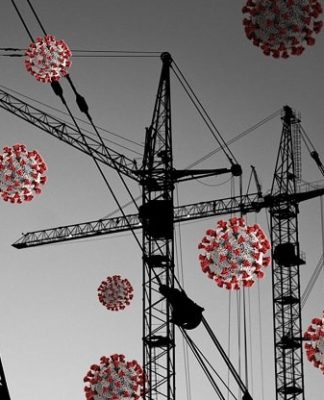Charting the global economy: Central banks step up tightening
PUBLISHED : 11 JUN 2022 AT 18:16
WRITER: BLOOMBERG NEWS

A man shops for consumer products at a supermarket in Bangkok. (Photo: Pornprom Satrabhaya)
More central banks around the world are unleashing a greater amount of policy firepower as they seek to combat unrelenting inflationary pressures.
Half percentage-point increases in interest rates are becoming more common, as seen in India and Australia this week. United States Federal Reserve officials next week are forecast to raise rates by 50 basis points as data showed a fresh four-decade-high rate of inflation.
The European Central Bank, however, is taking a more measured approach — at least in the near-term. Against a backdrop of soft economic activity, officials this week indicated they would boost rates a quarter point in July.
Here are some of the charts that appeared on Bloomberg this week on the latest developments in the global economy:
World
India and Australia both increased interest rates by a half point this week, joining more than 50 central banks that have hiked borrowing costs by at least such an increment in one go this year. Chile, Poland and Peru — already part of that club — also hiked again. Meanwhile, Russia went the other way, lowering rates to the level they were at before the invasion of Ukraine.
The world economy will pay a “hefty price” for the war in Ukraine encompassing weaker growth, stronger inflation and potentially long-lasting damage to supply chains, the Organisation for Economic Co-operation and Development (OECD) said. The organisation slashed its outlook for global growth this year to 3% from the 4.5% it predicted in December and doubled its inflation projection to nearly 9% for its 38 member countries. In 2023, it expects growth to slow to 2.8%.
Three of the key supply-side factors driving today’s global inflation levels have already turned around, meaning relief could be on the horizon for shoppers worldwide.
US
US inflation accelerated to a fresh 40-year high in May, indicating price pressures are becoming entrenched in the economy and shattering consumer confidence. The latest government inflation figures will likely push the Federal Reserve to extend an aggressive series of interest-rate hikes into the fall.
For the first time in two months, the Port of Los Angeles expects inbound container volumes will exceed year-earlier levels. It is too soon to say whether this is a blip or the start of a bigger wave of goods from Asia, but these numbers will be closely watched as the busiest US turnstile for trade edges closer to crunch time.
Gasoline reached US$5 a gallon or more in over a dozen US states a week into the peak summer travel season, as stockpiles of the fuel remain tight. At this rate, JPMorgan Chase & Co.’s prediction of $6.2 gallon gasoline by August seems well within reach.
Europe
The European Central Bank committed to a quarter-point increase in interest rates next month and opened the door to a bigger hike in the fall as it confronts record inflation. With fresh forecasts signalling a faster path for euro-zone prices than previously thought, it will cease large-scale asset purchases on July 1.
German factory orders unexpectedly sank in April as harsh lockdowns in China pressured global supply chains, adding to disruptions caused by Russia’s invasion of Ukraine.
Russian efforts to rewire trade flows and bypass sanctions for the war in Ukraine can’t make up for the collapse in imports that’s crippling its economy. One stark result so far: For the first time, Belarus, a neighbouring country that Russia used to help stage the invasion, in April leapfrogged Germany — an economy more than 60 times bigger — by the value of imports to Russia, according to a Bloomberg analysis of the latest data.
Asia
Bank of Japan Governor Haruhiko Kuroda pointed to some positive changes that suggest progress is being made toward his stable inflation target while making clear that policy tightening still isn’t an option for now. Several data sets are showing rising inflation expectations and a higher tolerance for price increases among households, the governor said in a speech Monday.
Thailand’s retail inflation quickened in May to its highest in nearly 14 years, a level that may test the central bank’s resolve to stand pat on borrowing costs. Consumer prices rose 7.1% from a year earlier, accelerating from 4.7% a month ago, official data showed Monday.
Emerging markets
Brazil analysts jacked up their inflation expectations for this year and next, before the central bank meets to discuss an extension of its aggressive cycle of interest rate hikes. Consumer prices will hit 8.89% in December, according to a central bank survey published on Monday, higher than the last forecast of 7.89% from May 2.

























